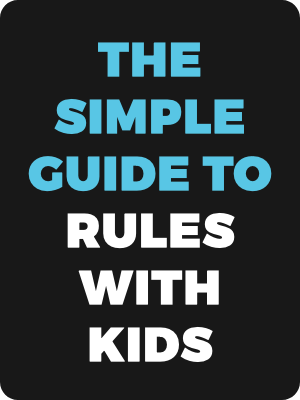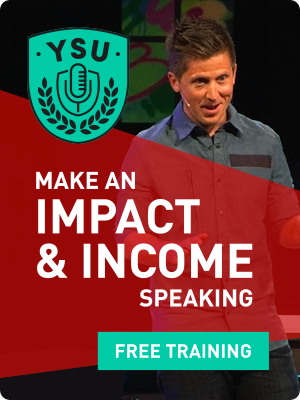The 5-Step Playbook For Teaching Your Kid How To Apologize
In the teen comedy, Mean Girls, students are asked to gather and publicly apologize to the people they’ve hurt.
One “mean girl,” Gretchen, offers a punch of comedy when it’s her turn:

No mystery here: That’s a pretty lame apology.
Sure, Gretchen says the words, “I’m sorry.” But she then proceeds to pass the blame onto others and even gives herself a pat on the back.
That’s why the line gets a laugh—because it’s ridiculous. The students in the scene recognize it, and anyone watching the movie recognizes it.
The point is, your kid can spot a bad apology when they see one. They know that just saying “I’m sorry” isn’t always effective. But when the time comes for them to take ownership, saying the right thing can be extremely difficult.
That’s where you come in. Our job is to model for our kids what a good apology looks like, and what it means to take responsibility for our actions.
You have to lead by example. Sound tough? It often is.
We’ve all been there, wanting to come off as tough and not walk away with our tail between our legs. Some parents–myself included–avoid apologizing to their kids because they think it will diminish their authority.
But here’s the good news: The opposite is actually true. When you apologize to your teen, they gain more respect for you.
Let me prove it to you: think of someone who recently genuinely apologized to you. Do you view them as weak or honorable? Exactly.
To own up and apologize is to model for them that you can be honest about a tough situation. AKA exactly what you’d want them to do.
The truth is that we all make mistakes, and in order to preserve relationships that may have been damaged by our mistakes, we have to own up to what we did.
Being able to offer and receive forgiveness is a crucial life skill. It’s also one that both you and your teen will benefit from building together.
So, if you’ve made a mistake and are worried about apologizing to your kid, don’t back away from the challenge.
The 5-Step Playbook for Teaching Your Kid to Apologize +
a Fill-In-The-Blank Apology Letter
Step 1: Be Genuine
It’s time for a gut check.
You need to be sure that you’re apologizing because you genuinely want to own up to your actions and improve the situation.
If you’re apologizing just because you want to get it over with and put the mistake behind you, your apology will miss the mark. And your kid will read right through it.
On the other hand, maybe you don’t feel like apologizing because you’re not genuinely sorry. Be honest with yourself about these feelings and reevaluate the situation. Are you too proud to apologize? Or afraid apologizing would come across as weak?
Ultimately, being genuine is crucial because it lets the other person know that you value them, their feelings, and the quality of your relationship.
Rookie: “I’m sorry, okay?”
Pro: “I’m not always good at listening, but I want you to know that I’m sorry, and I care about what’s going on in your life.”
Step 2: No Excuses
Kids learn a little from what we say, but they learn more from what we do. If you don’t want your kids making excuses for their behavior, you shouldn’t make excuses for yours.
If you attempt to make excuses for your mistakes, you end up either: justifying, minimizing, or reclassifying. That doesn’t make for an effective apology does it?
Obviously, no. Because the actual issue isn’t addressed, and your kid still feels the repercussions of what you did without any recognition from you.
A good apology should communicate that you know you did something wrong.
Rookie: “Accidents happen.”
Pro: “I own that I made a mistake.”
Step 3: Take Responsibility
Before you even offer your apology, you must be ready to make things right.
This may come at a cost to you—be it of time, money, or pride. Either way, your willingness to take responsibility for your behavior is paramount. Again, just like we’d want our kid to do.
For example, you may have forgotten to do something you’d promised. To make up for your oversight, you may have to reschedule an important event and circle back to your initial promise.
Rookie: “It happened. It’s over. Let’s move on.”
Pro: “I’d like to brainstorm how I can make it right.”
Step 4: Strategy To Change
Even after you’ve apologized, your kid may not be satisfied with just a verbal recognition of the incident. They might turn around and say, “You’re sorry? So what? Prove it.”
And they’d be right to. You need to find a way to communicate to your teen that you have a strategy not to make the same mistake over and over again. If you skip this step, they may think you’re trying to smooth things over but don’t intend on changing your behavior.
This part can be difficult. You’re not perfect, and neither is your kid. This is a chance to show them how to maturely deal with mistakes. When I speak at events with teens or parents, I share the idea that “Wishful thinking is NOT a strategy.” In this instance consider: what is my specific strategy for minimizing the possibility of this happening again? Willpower or positive thinking isn’t always enough for any of us. around
People want to know that you will make an honest effort to avoid similar situations. So, figure out what the strategy is, and tell the person you’re apologizing to.
Rookie: “I said I won’t do it again.”
Pro: “Before I commit to something, I will triple check my calendar first.”
Step 5. Don’t Control Their Response
Ideally, you’ll deliver your apology, and your kid will say, “I accept your apology, I forgive you, and wow you’re so brave/mature/amazing.” And everything will go back to normal.
However, the conversation might not unfold that way.
They may not accept your apology. They might say they need time, or say they’re really upset and there’s no way they’ll ever forgive you.
Their response is their responsibility. You can’t control how they’ll receive your apology.
How they take the apology—that’s on them. Sometimes, it requires more maturity to accept an apology than to deliver one.
Rookie: “I apologized and you can’t even accept it?!?!?!”
Pro: “Take your time. I’m ready to listen when and if you’re ready to talk.”
In tying these all together, we find ourselves with a simple equation for a sound apology. Simple to understand, difficult to do.
Be Genuine + No Excuses + Take Responsibility
+ Strategy to Change + Don’t Control
CHALLENGE: Now It’s Your Turn
Identify something you’ve let sit dormant, and follow the steps above to address the issue.
Let’s say (hypothetically of course) you had a rough day and snapped at your kid. We’ve all been there, yet you know what you did was wrong.
Here’s a sample apology using this five-step guide:
“Hey, son. If it’s all right, I want to talk to you about something that’s on my mind. I can see that you’re upset, and it’s because of something I did.
(Be Genuine) I’m not always good at keeping my cool, but I want you to know that I truly care about your feelings.
(No Excuses) I made a mistake.
(Take Responsibility) I chose to yell at you and for that I’m sorry.
(Strategy to Change) In the future I’m going to take 30-minutes to cool off.
(Don’t Control) If you need some time to think about this, I understand. I’m ready to listen when and if you’re ready to talk.”
Still feeling overwhelmed about apologizing? That’s okay. You can start the process by writing your apology using our fill-in-the-blank apology letter. Then, with your completed apology in hand, you can either practice saying it out loud or deliver the note to your teen.
However your give-and-take develops, remember that it doesn’t have to be perfect. As long as you stick to the five steps above, you’ll be prepared to have a healthy, productive conversation.
Most importantly, when your kid makes a mistake in the future, they’ll recall how you responded and be influenced to follow your lead.
DOWNLOAD: Fill-In-The-Blank Apology Letter




